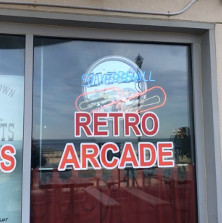 Silverball Museum Arcade
Silverball Museum Arcade
Asbury Park, New Jersey
Like any artifact of pop culture, pinball machines reflected the mores of the era. So is it a victory of feminist thought that the sexy ladies depicted on these machines' backdrops -- to titillate coins from their owners pockets -- have evolved over the decades, from dude eye candy to rock stars championing their own journeys?
Here are a few photos of pinball machine backdrops that chart this shift, from the awesome Silverball Museum Arcade in Asbury Park, New Jersey. (& see even more here!)
![]()
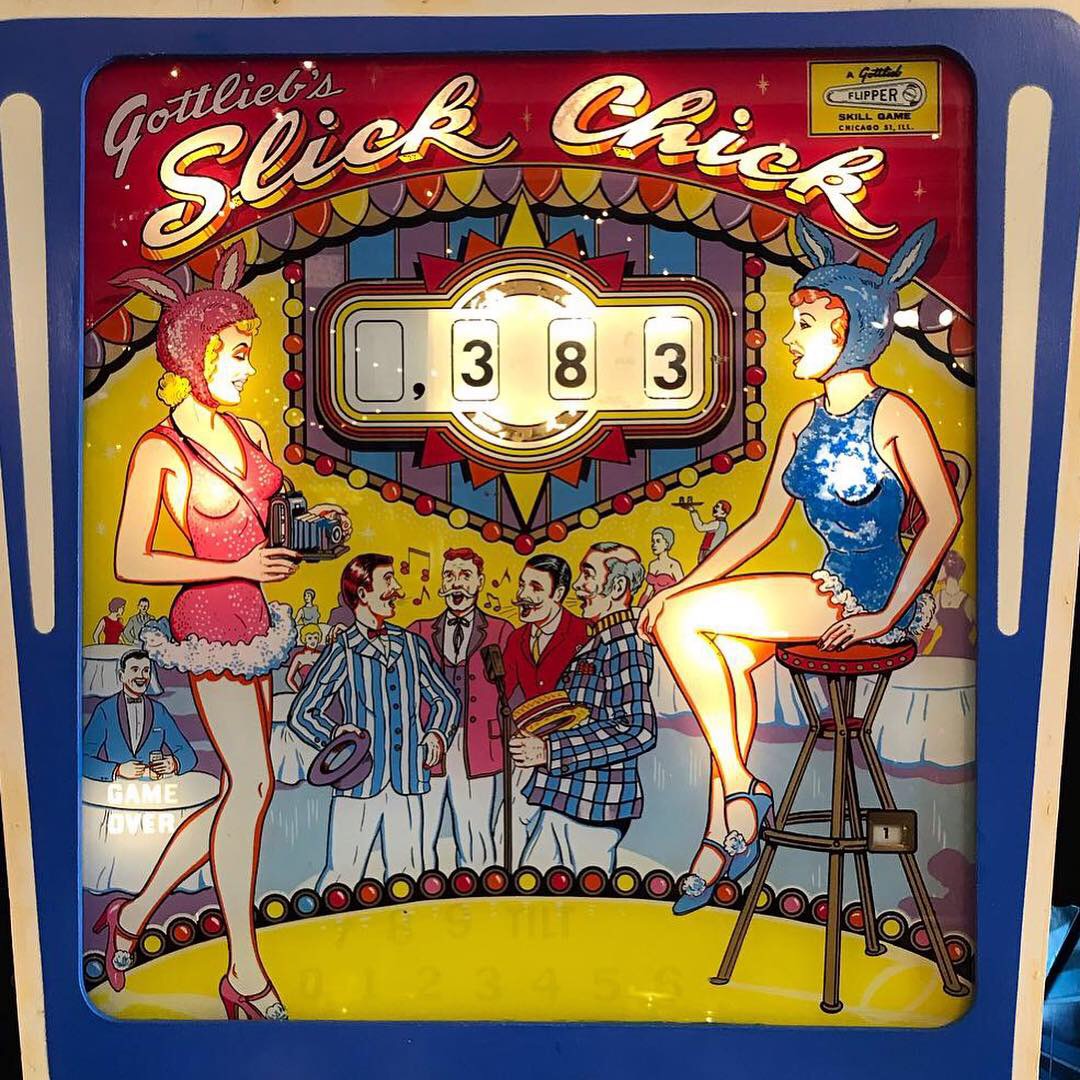
"Slick Chick" (1963): Playboy Bunnies commemorating the nudie empire's opening of its swank Chicago nightclub. It is a "tough game to master," the museum notes (Artist: Roy Parker, Gottlieb)
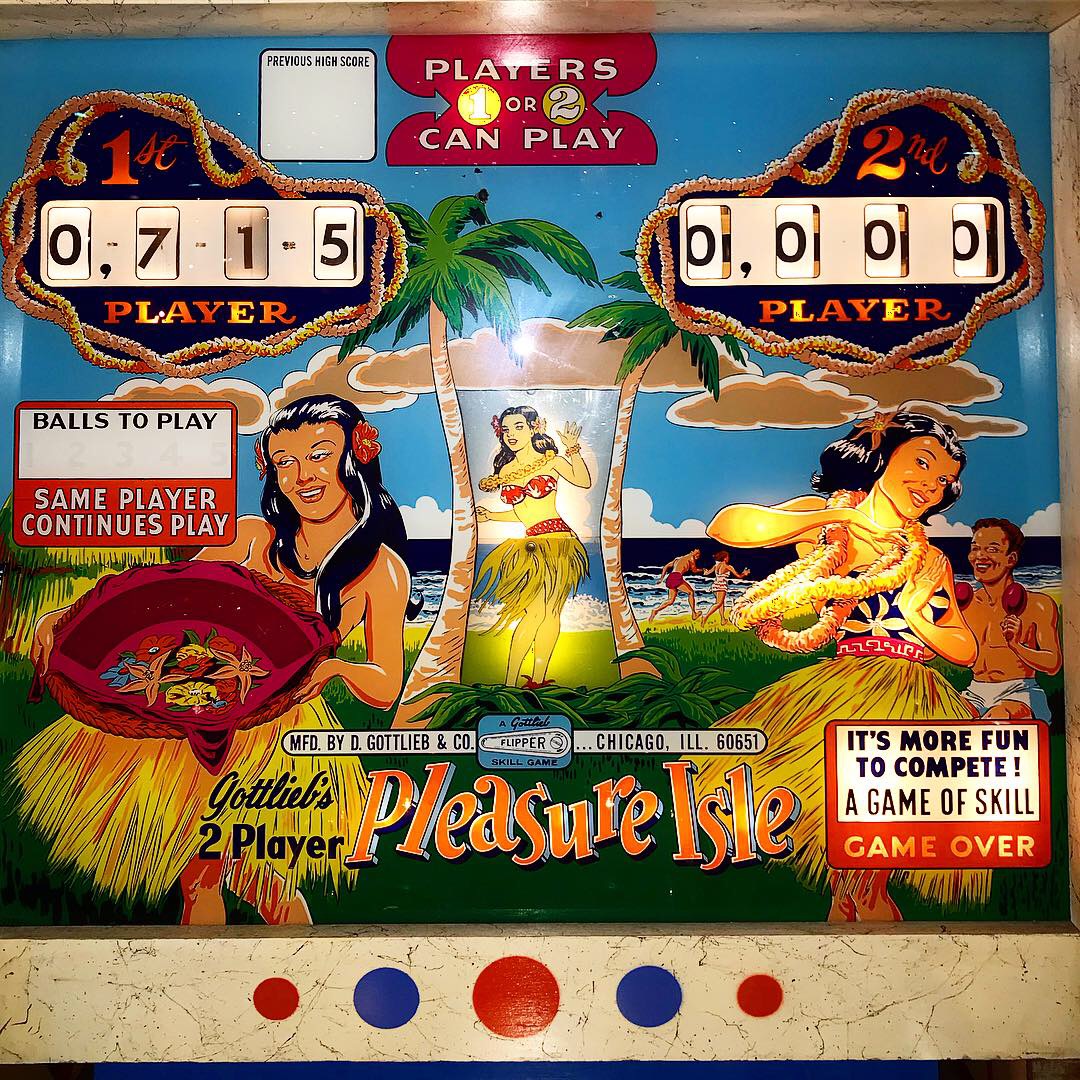
"Pleasure Isle" (1965): Dancing Hula girl in the animated backglass. (Roy Parker, Gottlieb)
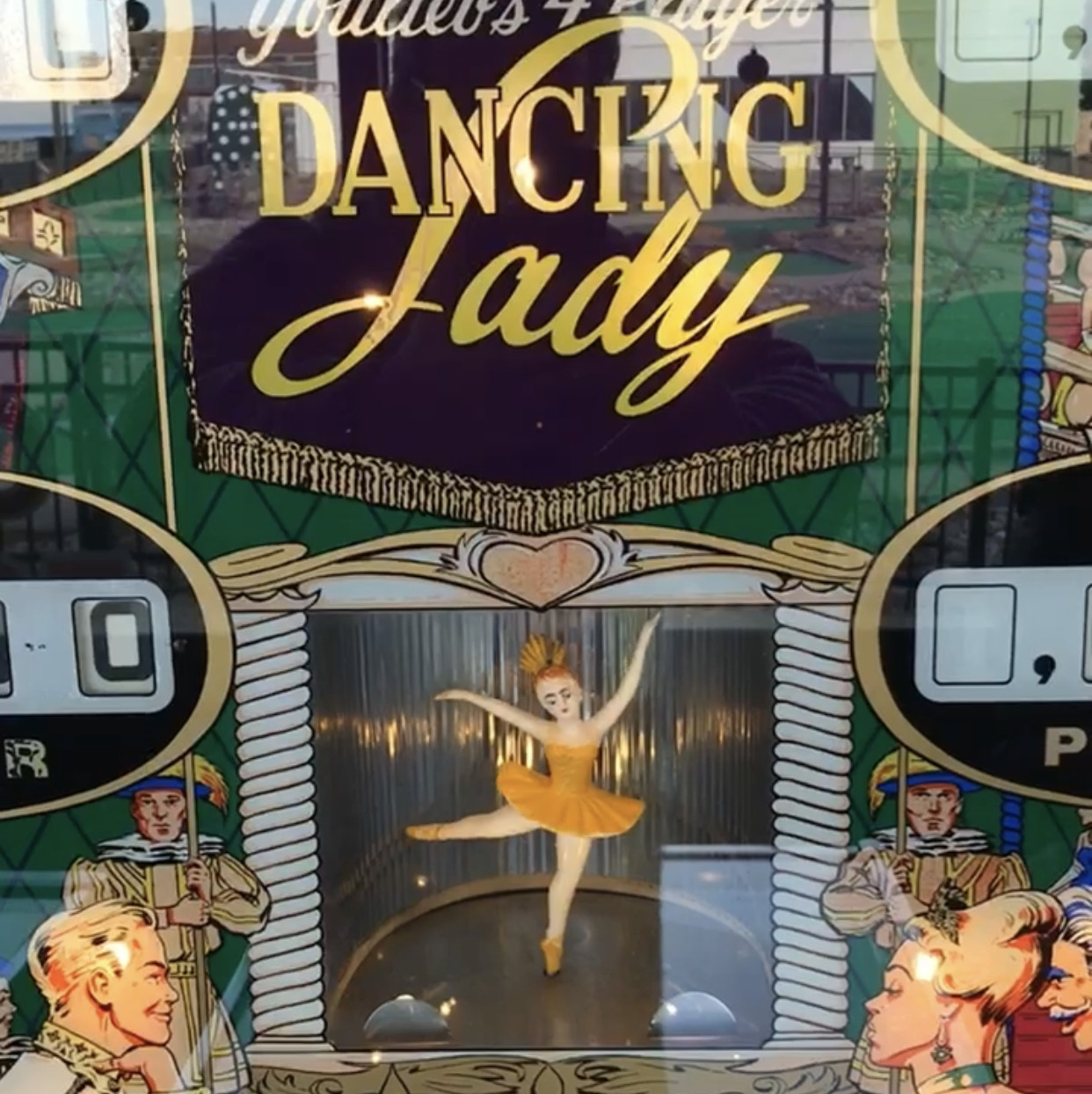
"Dancing Lady"(1966): Animated backglass with a lady who would were twirl each time the player the shoots the ball.(Art Stenholm, Gottlieb)
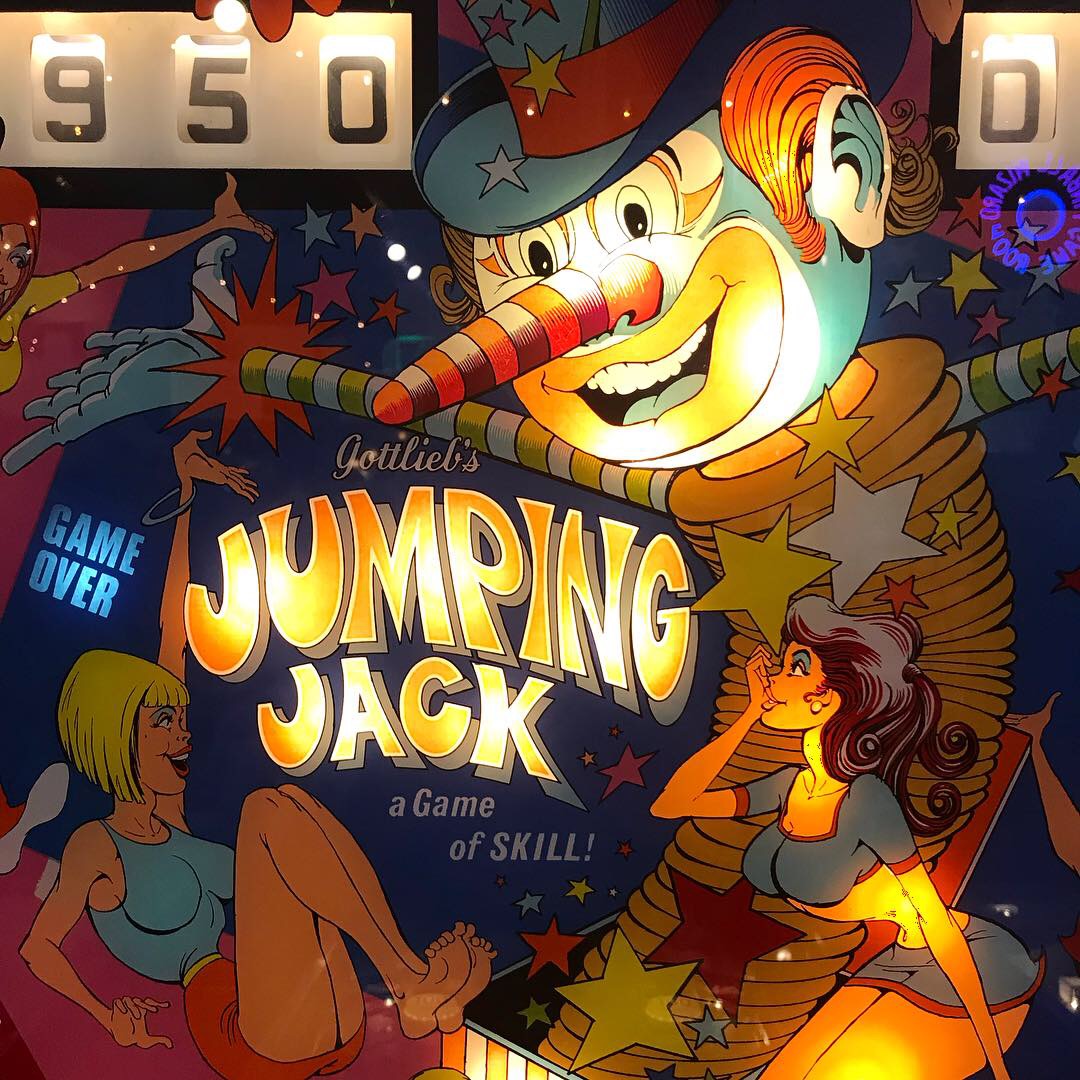
"Jumping Jack" (1972): The ladies here seem delighted with Jumping Jack, or maybe his long pointy nose, not sure. We are now entering the Gordon Morison-era of design for Gottlieb. (Gordon Morison, Gottlieb)
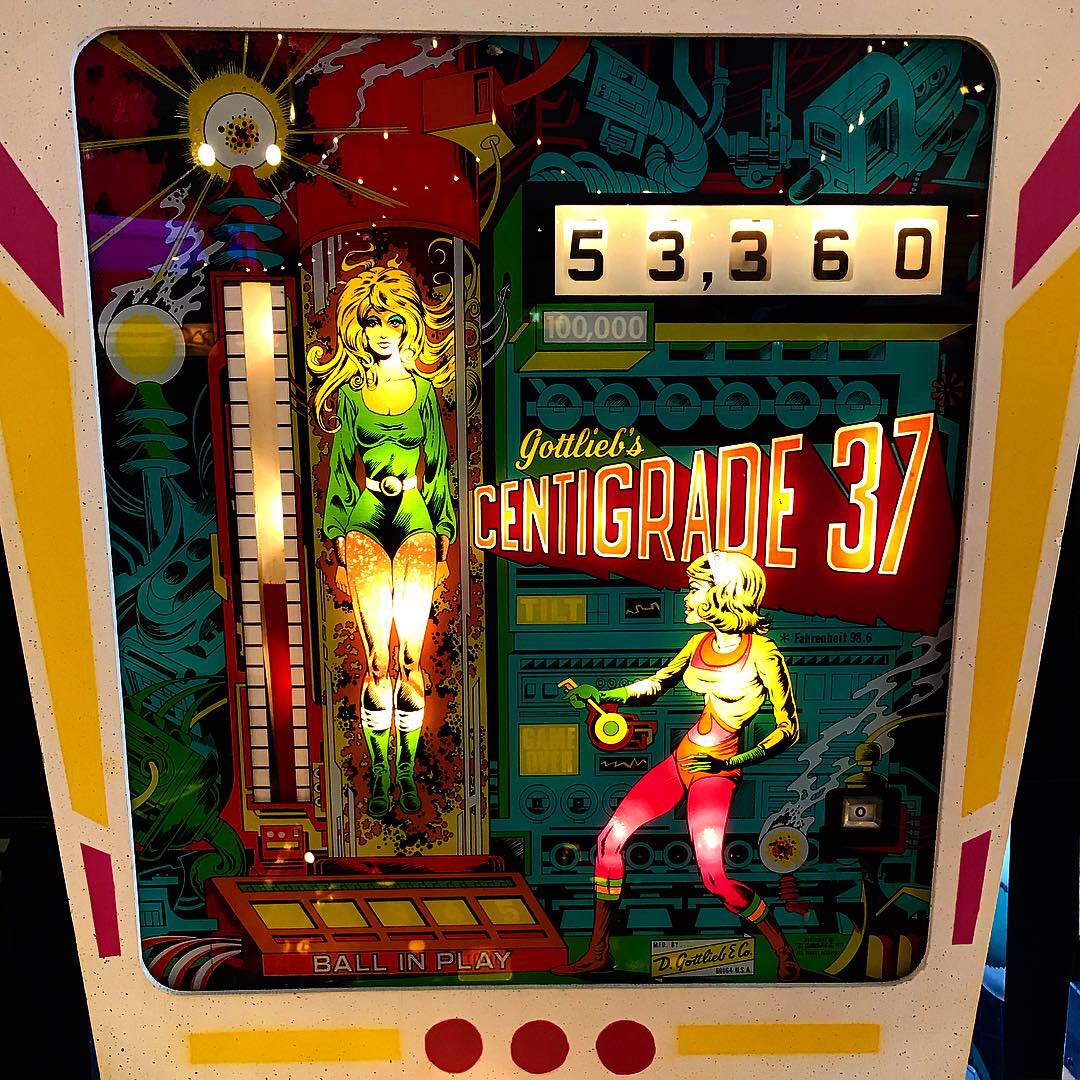
"Centigrade"(1977): The more targets the player hits, the higher the temperature goes! (Gordon Morison, Gottlieb)
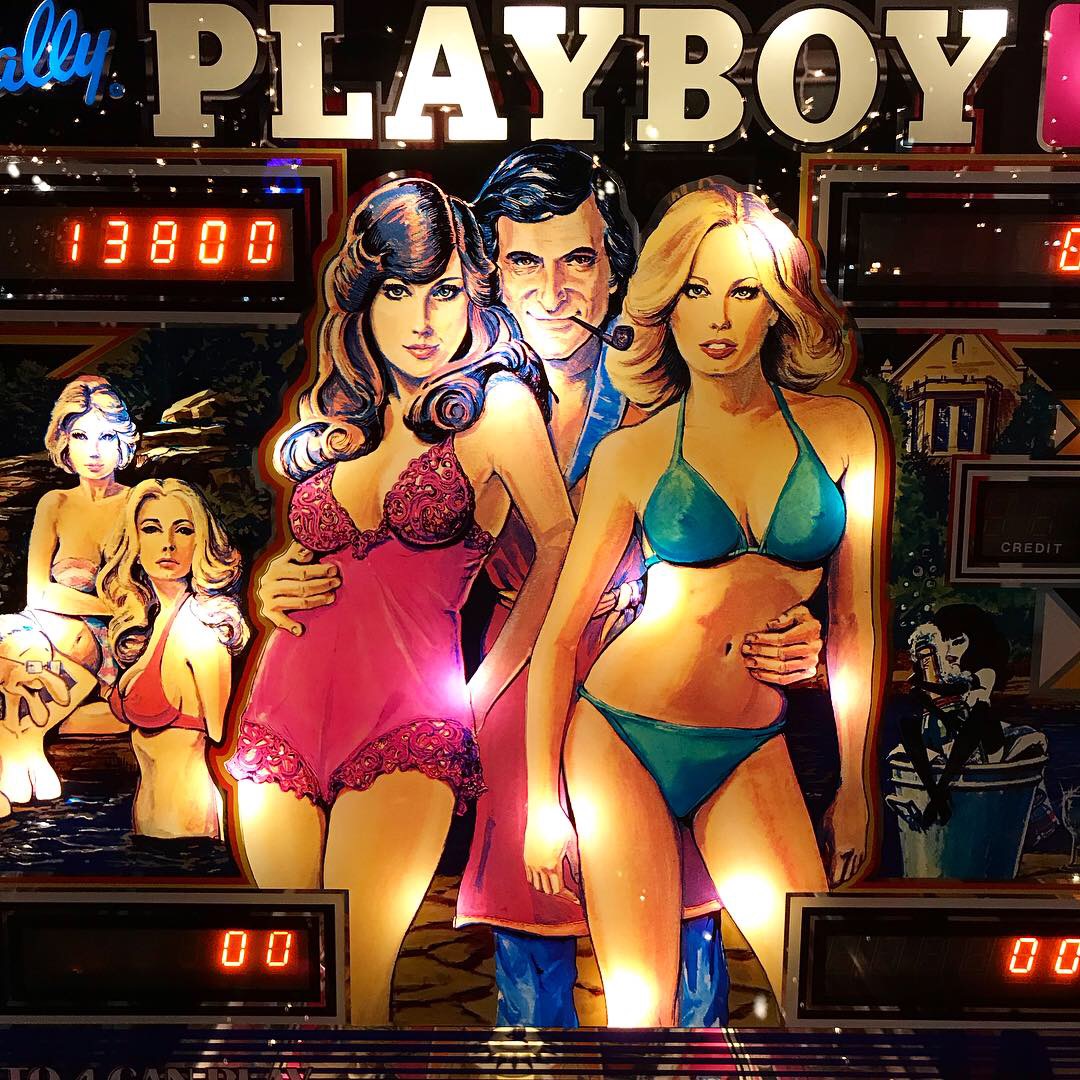
"Bally Playboy" (1978): Inspired by the "Playboy After Dark," late-night TV variety show, this game was one of the first solid-state pinball games. That's Hugh Hefner on the backglass, along with model Sondra Theodore. Lots of "smooth shots" with this game, according to the museum. (Paul Faris, Bally)
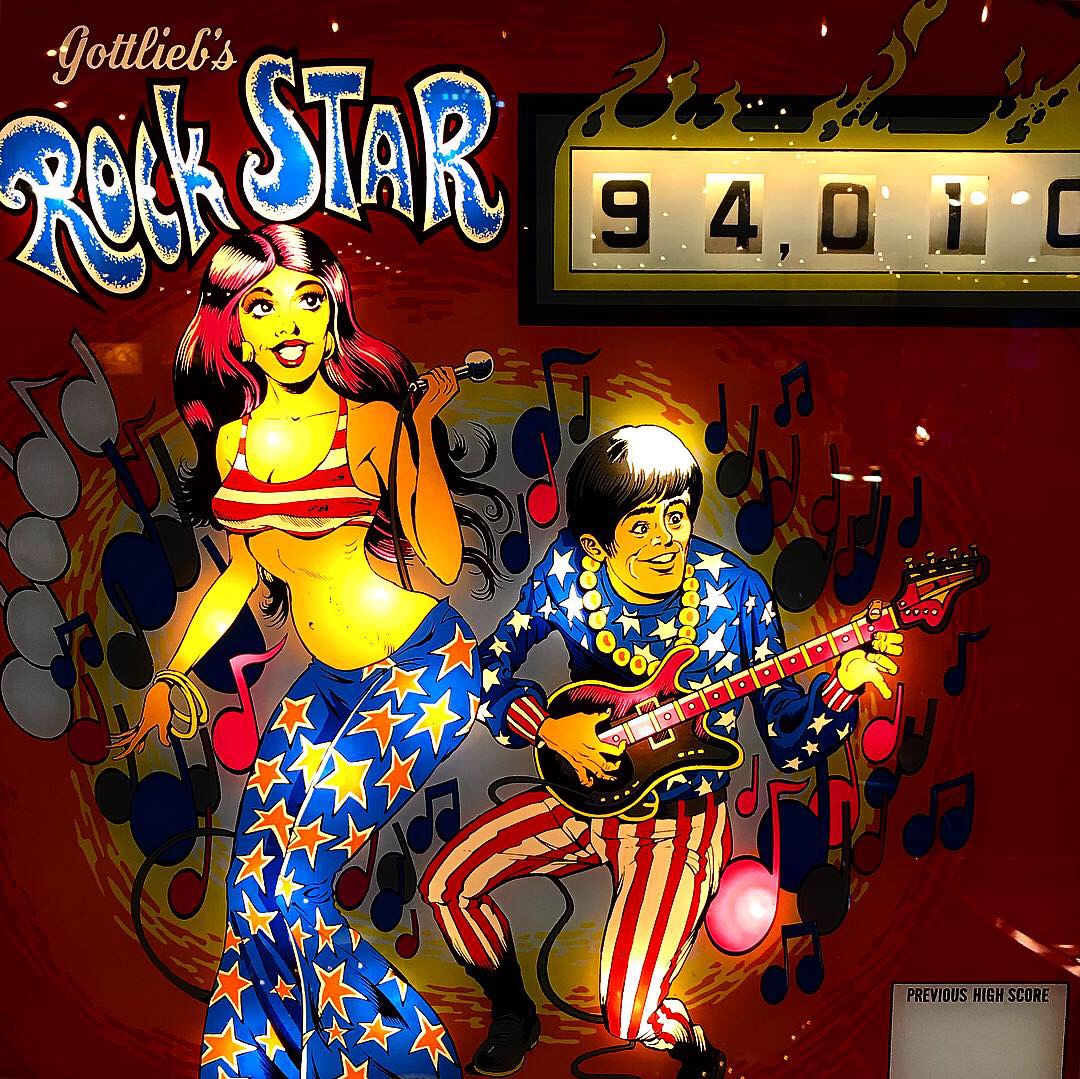
"Rock Star" (1978): The goal of this game is to fill in all the notes down the left side of the board. Interesting shift here as the woman is singing and the male guitarist is the backup. Check the Bicentennial (1976) threads. (Gordon Morison, Gottlieb)
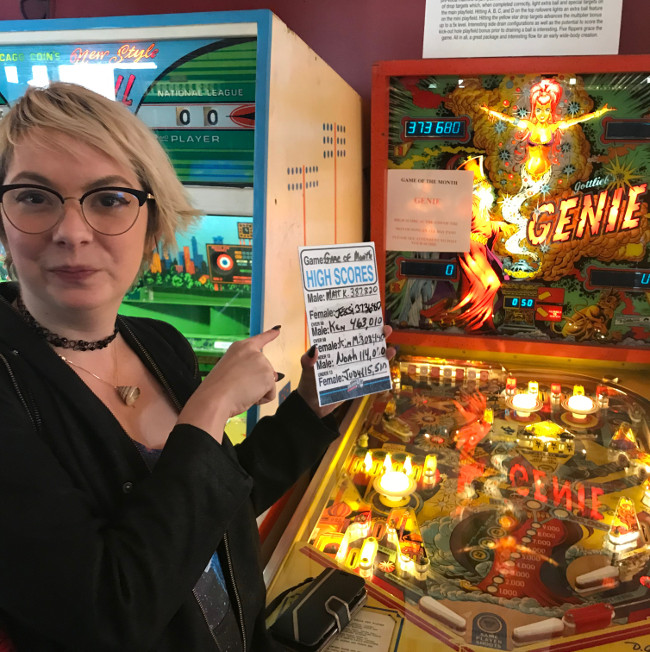
Yay! My friend Jess got top score of February for "Genie" (1978), one of the last "pre-vocal" models, whatever that means. (Gordon Morison, Gottlieb)
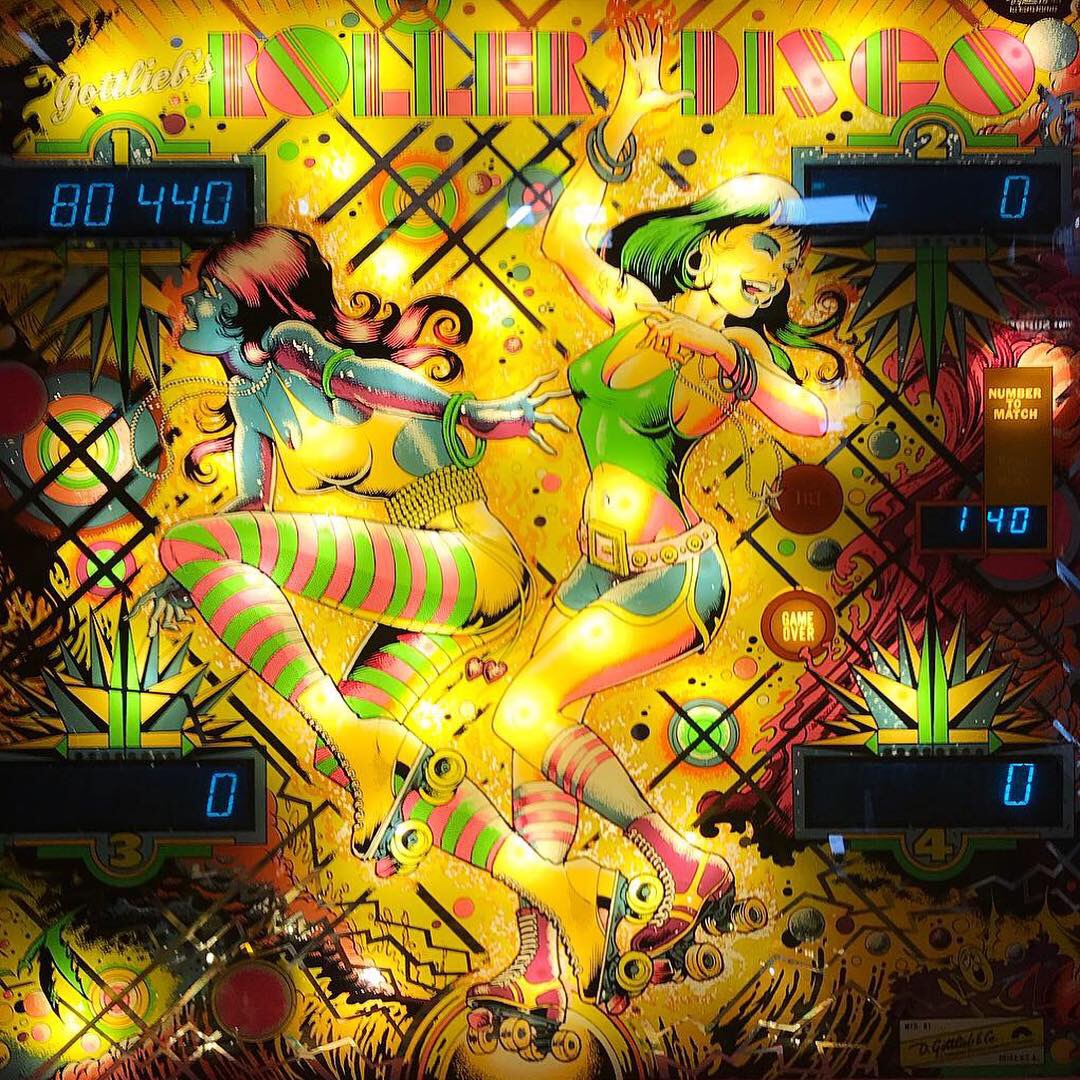
"Roller Disco" (1980): The disco era hits the pinball, with this "wide-bodied" game. (Gordon Morison, Gottlieb)
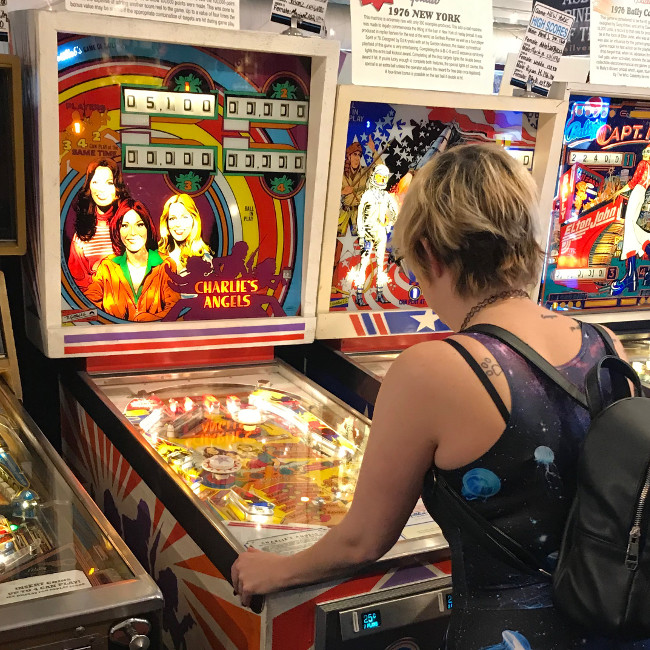
"Charlie's Angels" (1979): Getting into the age of cross-promotion, this game was based on the hit TV show, "Charlie's Angels" with Kate Jackson, Farrah Fawcett, and Jaclyn Smith. It was one of the last electro-mechanical pinball games, though a more popular solid-state edition was also made. (Gordon Morison, Gottlieb)

"Cirqus Voltaire" (1978) came at the twilight of the pinball machine era, as video games were by then the dominant form electronic entertainment in the arcades, pizza parlors, and bars. It was "one of the most colorful machines ever produced," according to the museum, and now one of the rarest, as many sat around in boxes, unopened, years after they were produced. (Linda Deal, Bally)